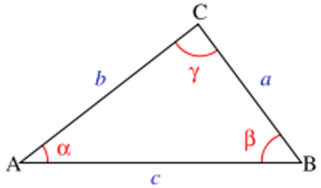Two sides of a triangle are 18 and 11. What is the range of possible values for the third side?
1 Answer
From just above 7 to just below 29
Explanation:
For this question what we want to use is the law of cosines, also known as the cosine formula or cosine rule. It states that the square of the side opposite an angle is equal to the sum of the squares of both adjacent sides minus 2 times each side and the cosine of the angle. Like this:

Since the sum of the internal angles of a triangle has to be
So for a low value of c (
Now for a high value of c (
So for all possible angles of

